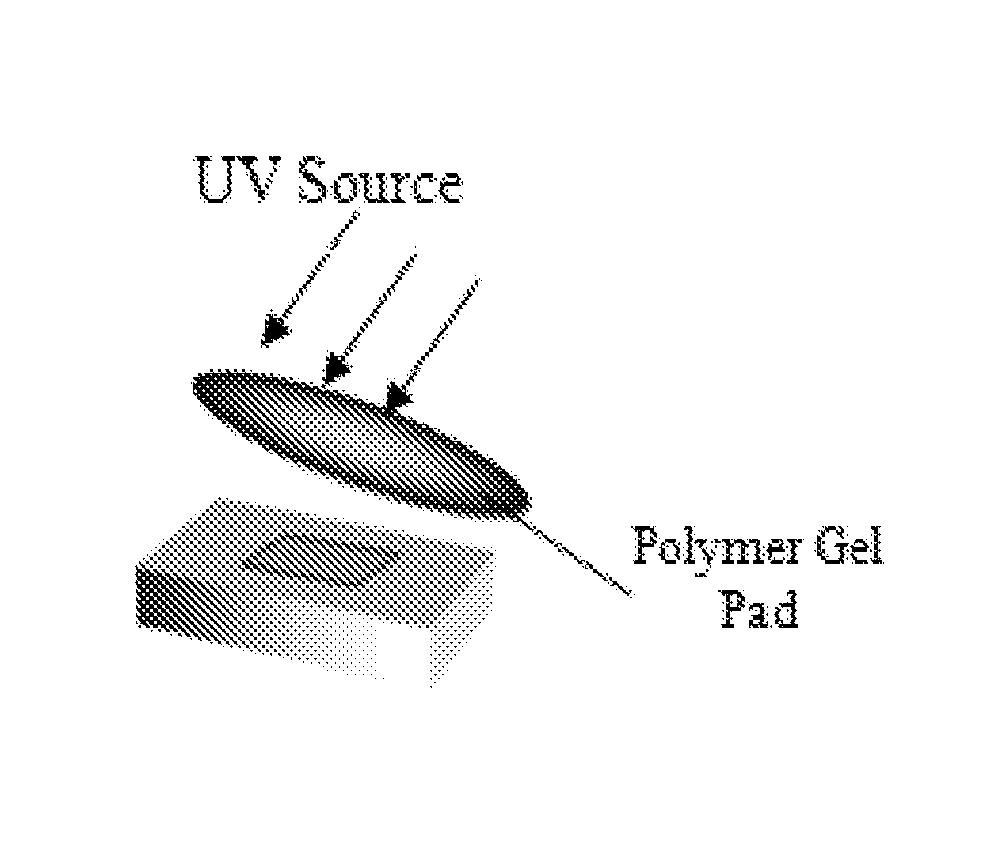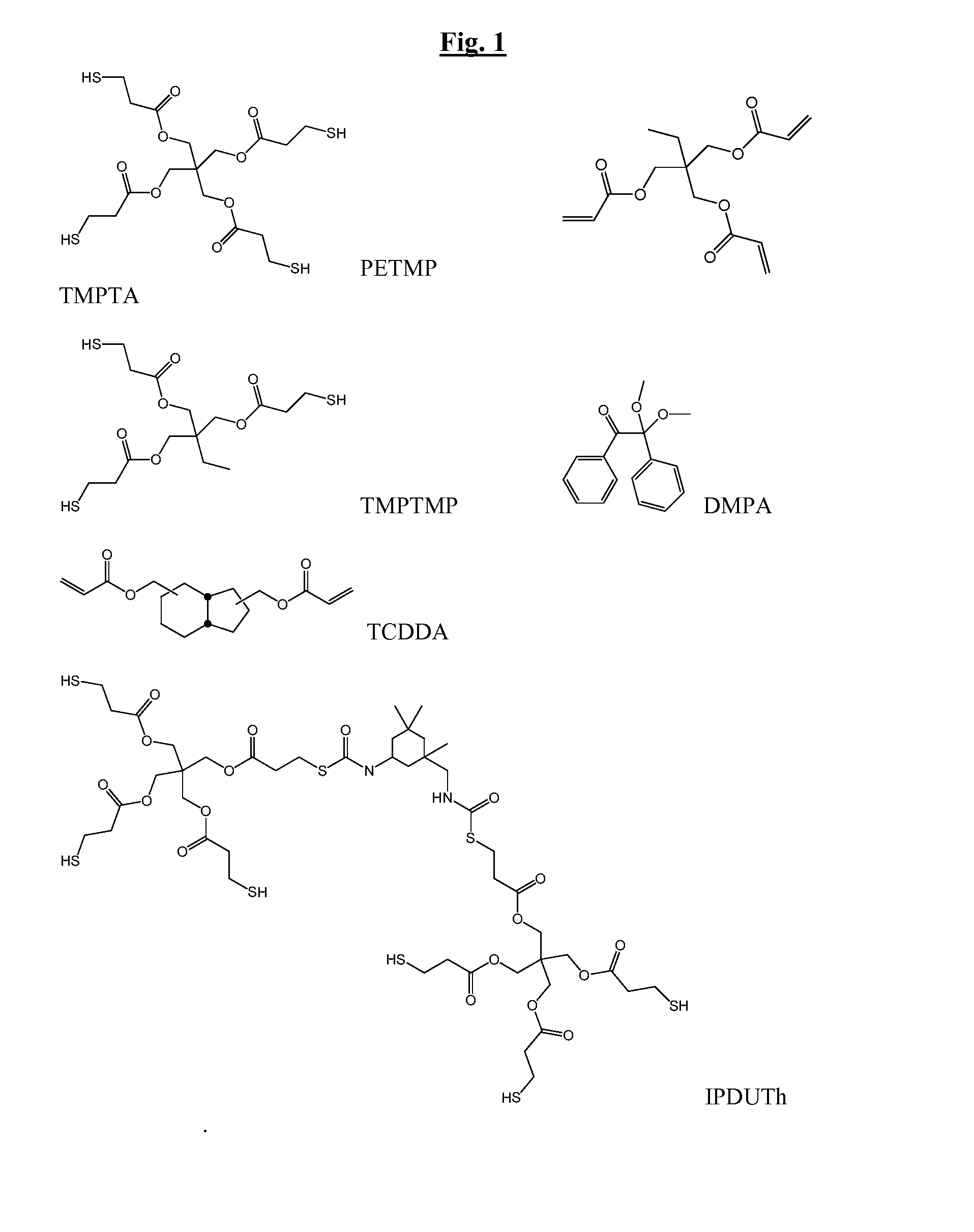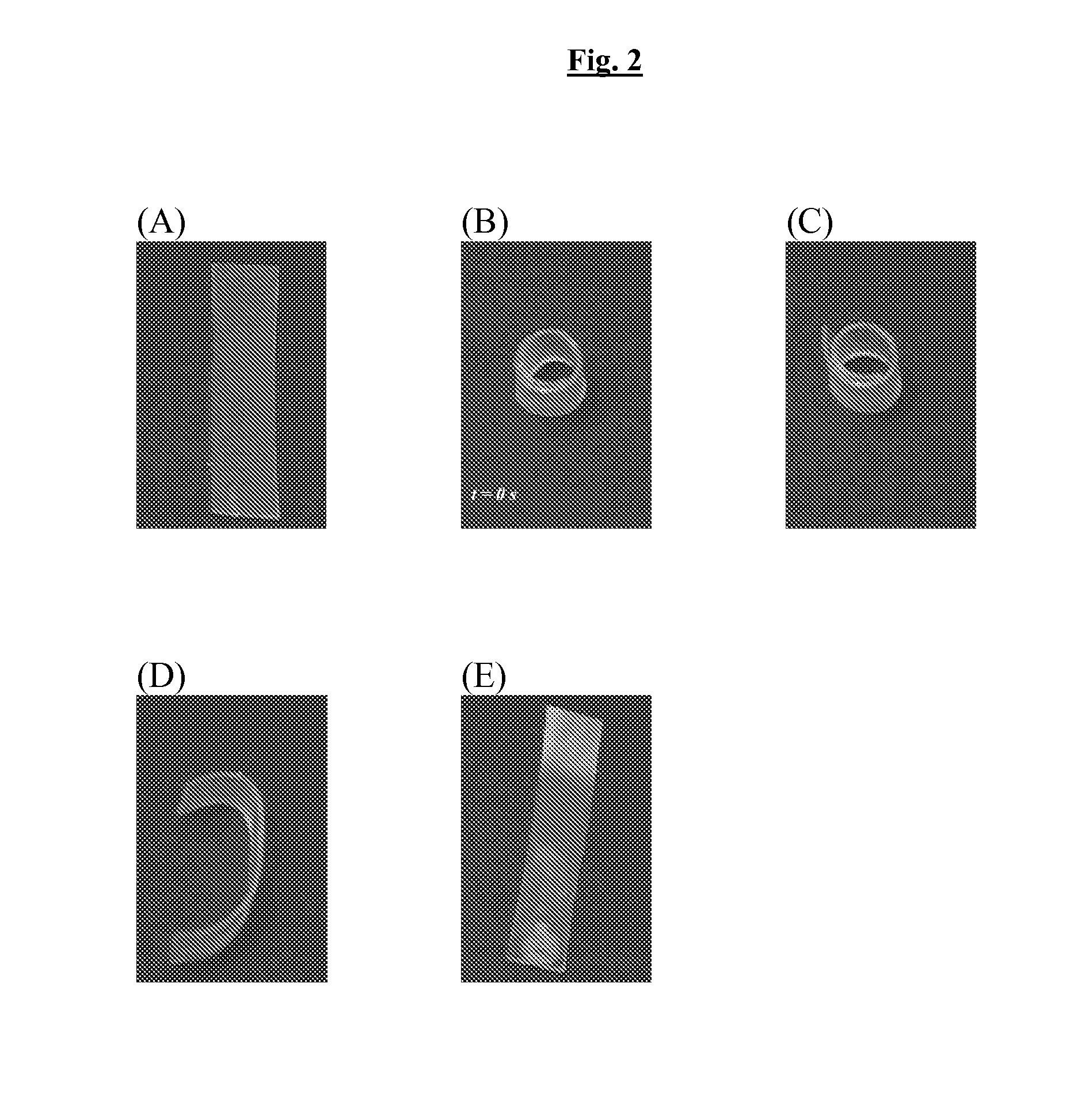Dual-Cure Polymer Systems
a polymer system and dual-cure technology, applied in the field of manufacturing, can solve the problems of requiring complete and expensive total replacement, affecting the production efficiency of intricately shaped parts, and hampered the universal use of polymeric materials in manufacturing,
- Summary
- Abstract
- Description
- Claims
- Application Information
AI Technical Summary
Benefits of technology
Problems solved by technology
Method used
Image
Examples
example 1
Reaction Between Thiol and Acrylate Systems
[0163]In this study, a novel non-stoichiometric thiol-acrylate formulation that generates a novel dual-cure shape memory polymer system was identified. In terms of the design of a biomedical device, after the first stage of the cure process, the system has mechanical properties that allow optimum deployment of the device to the body. After the device is installed in the body, the second stage of the cure process may be deployed.
[0164]The properties of dual-cure thiol acrylate systems with potential biomedical applications were evaluated as illustrated below. Two different thiol and acrylate systems with different stoichiometric ratios of acrylate to thiol were used. The reaction between a tetra-thiol (PETMP) and a triacrylate (TMPTA), and the reaction between a tri-thiol (TMPTMP) and a triacrylate (TMPTA) were examined The different stoichiometries used had an acrylate to thiol ratio of 1:1 (control), 3:2 and 2:1.
[0165]The initial Michael a...
example 2
Characterization of Polymer Systems
[0167]The monomers were mixed in the specified stoichiometric ratios and the first stage of the cure process was carried out at ambient temperature. Twenty-four hours later, the Tg of the polymer along with its modulus was measured. The second stage of the cure process was then affected by exposing the polymer to UV light (8 mW / cm2) for up to 20 minutes at ambient temperature. At the end of the second stage of the cure process, the Tg and the modulus of the polymer were measured again. The modulus at body temperature was measured by holding the polymer at 38° C. (body temperature) for 45 minutes (Tables 2-6).
[0168]Shape memory programming and shape recovery was done by deforming the polymer obtained after the first stage of the cure process into its temporary shape at a temperature T>Tg. The polymer was then stored in its temporary shape at temperature Tg. On being exposed to a temperature T that was greater than the Tg of the polymer, its shape re...
example 3
FTIR Characterization
[0175]FTIR was used to monitor the kinetics of two of the initial systems (PETMP / TMPTA and PETMP / TCDDA) during both stages of the dual-cure reaction. Table 9 summarizes conversions for control and experimental mixtures of each of the initial systems. As expected, thiol conversion was near 100% for all systems both before and after UV curing. Furthermore, acrylate conversion during the first stage of curing appeared to be determined by different stoichiometric ratios, while all acrylate groups showed a significant increase in conversion during second stage curing. These results indicated that all thiol reacted with acrylate during the first stage Michael addition and that any excess acrylate in the system was successfully homopolymerized during the second stage photo curing.
TABLE 9Thiol and acrylate conversions after Stage 1 and Stage 2 curing. The PETMP / TCDDA and PETMP / TMPTA samples contained varying thiol-to-acrylate stoichiometric ratios, with 0.8 wt % TEA to ...
PUM
| Property | Measurement | Unit |
|---|---|---|
| Temperature | aaaaa | aaaaa |
| Temperature | aaaaa | aaaaa |
| Temperature | aaaaa | aaaaa |
Abstract
Description
Claims
Application Information
 Login to View More
Login to View More - R&D
- Intellectual Property
- Life Sciences
- Materials
- Tech Scout
- Unparalleled Data Quality
- Higher Quality Content
- 60% Fewer Hallucinations
Browse by: Latest US Patents, China's latest patents, Technical Efficacy Thesaurus, Application Domain, Technology Topic, Popular Technical Reports.
© 2025 PatSnap. All rights reserved.Legal|Privacy policy|Modern Slavery Act Transparency Statement|Sitemap|About US| Contact US: help@patsnap.com



